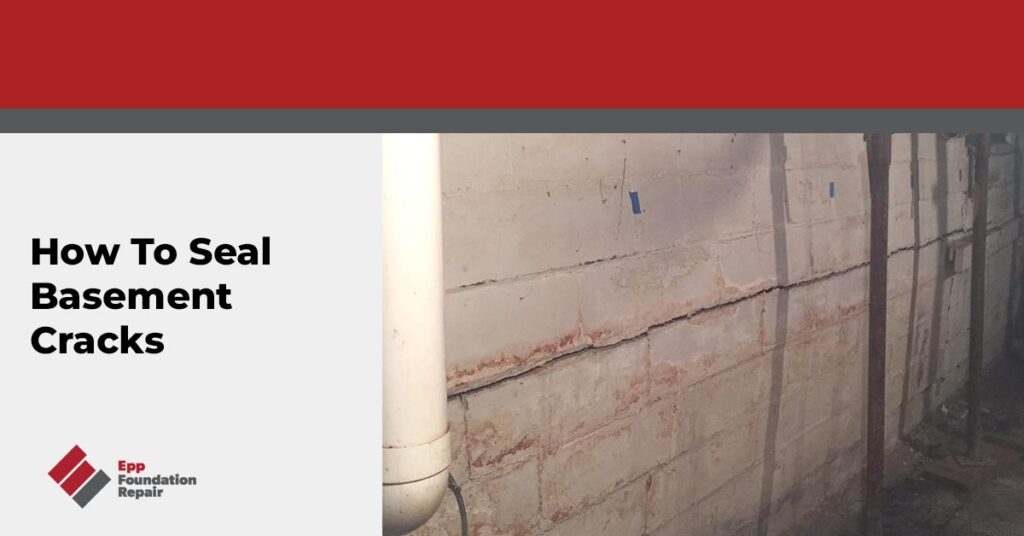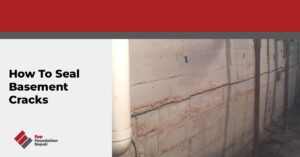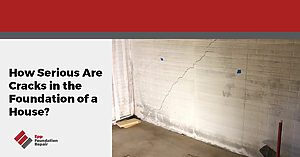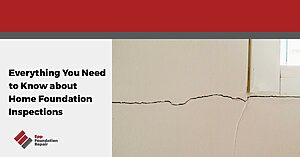Looking for information about how to seal basement cracks? If so, don’t hit that back button because you’ve landed on the right page. In this article, we’re going to go over the types and causes of basement wall cracks, how to seal basement cracks, when to call a professional and more.
Types of Basement Wall Cracks
Structural vs. non-structural cracks
There are two different types of basement wall cracks: structural and non-structural. Structural cracks affect the building’s structural integrity. Non-structural cracks are usually just unsightly. While they aren’t structurally significant, they can allow water to seep into a basement or crawl space. Therefore, they should be sealed.
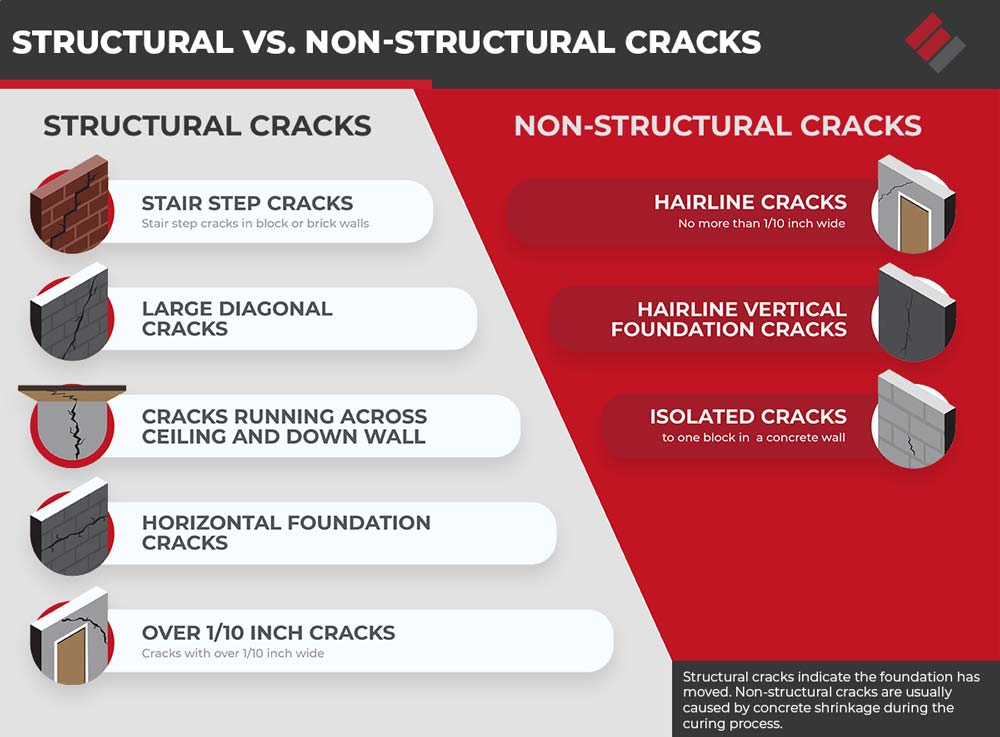
Structural basement wall cracks: Causes and characteristics
Structural cracks in a basement wall are caused by various things, including hydrostatic pressure and frost heave. We’re going to talk more about the causes of structural basement wall cracks in the next section.
Signs a basement wall crack is structural include:
- Horizontal cracks (with or without bowing)
- Stair step cracks
- Diagonal cracks
- A series of vertical cracks next to each other
Structural cracks are usually larger and look serious. If it looks bad, it’s probably a structural crack.
Non-structural basement wall cracks: Causes and characteristics
In poured concrete foundation walls, non-structural cracks are usually caused by shrinkage during the concrete curing process. A non-structural crack in a foundation wall built using concrete blocks might have been caused when a block was cracked during transport to the construction site.
Non-structural cracks in a poured concrete foundation wall are usually hairline and vertical.
It’s important to distinguish between structural and non-structural cracks because their repair methods differ. Structural cracks require significant intervention and typically involve stabilizing the foundation, while non-structural basement wall cracks can be sealed using solutions like epoxy crack injection.
Causes Of Structural Cracks In A Basement Wall
Basement walls can crack for various reasons, including the following:
Hydrostatic pressure
Hydrostatic pressure builds up when poor drainage allows water to accumulate in the ground around the foundation. Hydrostatic pressure exerts a tremendous force against foundation walls, and if it isn’t relieved, the foundation wall will eventually bow inward and even crack. Cracks in a basement wall caused by hydrostatic pressure are serious and negatively affect the home’s structural integrity. They can also allow water to seep into the basement. Fortunately, basement wall cracks caused by hydrostatic pressure can be fixed. We’ll talk more about repair options for basement wall cracks later on.
Expansive soil
Expansive soil can also cause basement wall cracks. This happens because expansive soil contains a lot of clay. Because of this, it expands when it soaks up moisture and then shrinks when it dries out. This soil expansion pushes against foundation walls and, over time, can cause basement wall cracks.
Check out our post about – Garage foundation repair.
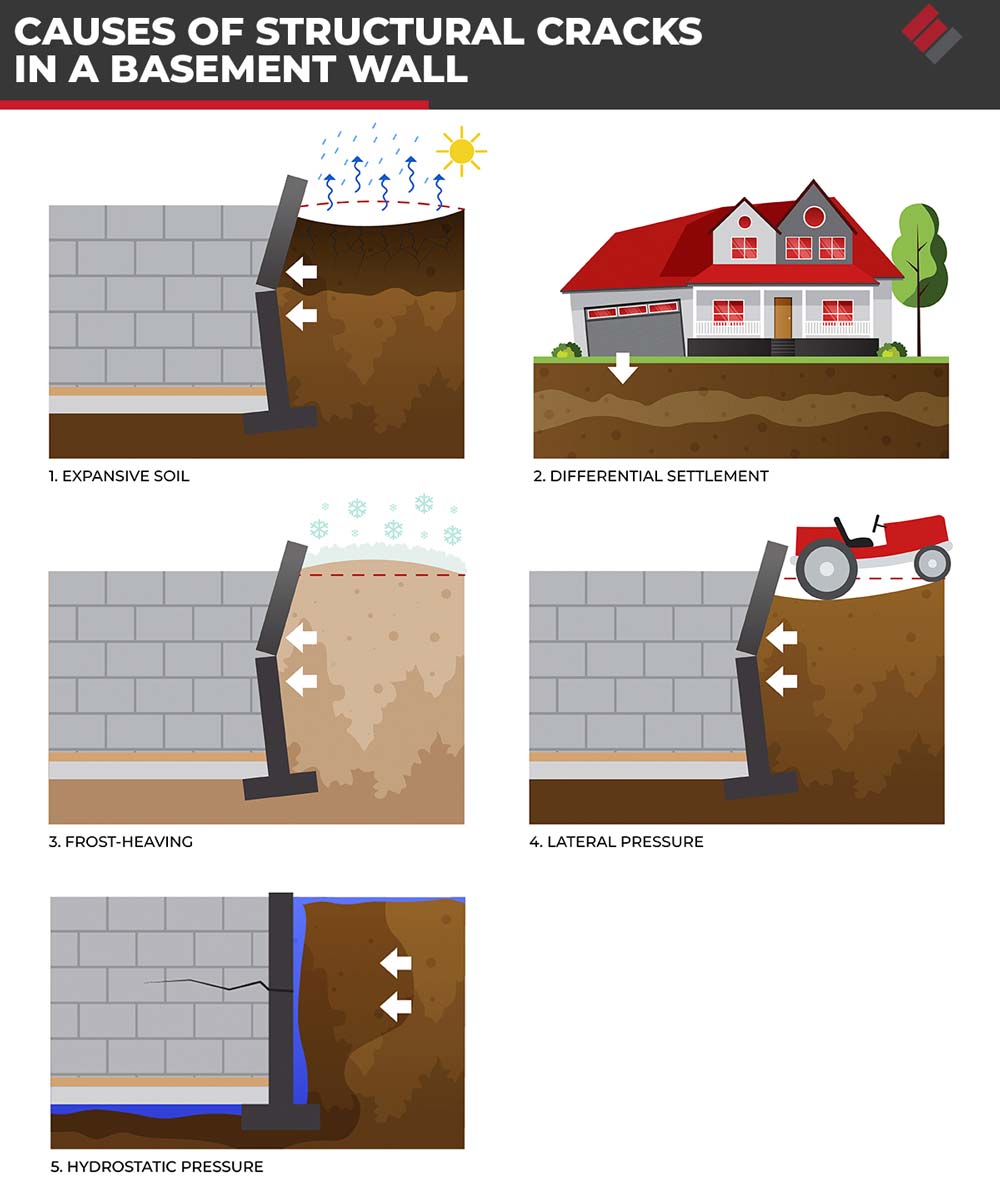
Something heavy parked next to the house
Heavy objects, such as large trucks and dumpsters parked next to the house, can exert lateral pressure against foundation walls, leading to cracking.
Frost heave
Frost heave can also cause cracks in basement walls. This happens because when the soil freezes, it expands and pushes against the foundation walls. As the ground thaws, the pressure subsides. Over time, this can cause a foundation to shift and crack.
Differential foundation settlement
Differential foundation settlement happens when a foundation settles into the ground unevenly. This places a lot of stress on the foundation and can lead to cracks in basement walls.
How To Seal Basement Cracks
Repair solutions for non-structural cracks in a basement wall
When it comes to non-structural basement wall cracks, epoxy crack injection is a highly effective solution. This technique involves injecting an epoxy adhesive into the crack, which hardens to create a durable bond. The injection process typically takes just a few hours, and the epoxy will cure fully within 24 hours.
While epoxy crack injection is a highly effective solution for non-structural cracks, it’s important to note that it may not be suitable for more serious structural issues. It’s best to consult a professional foundation repair contractor to determine the appropriate action.
Repair solutions for structural cracks in a basement wall
Possible repair solutions for structural cracks in a basement wall include carbon fiber straps, wall plate anchors, and c-channel wall anchors. For more information, see What is Carbon Fiber Foundation Repair?
When To Call A Professional
If you notice a crack in your basement wall and believe it might be structural, contact a foundation repair contractor immediately and ask for an evaluation. Here are some things to look out for:
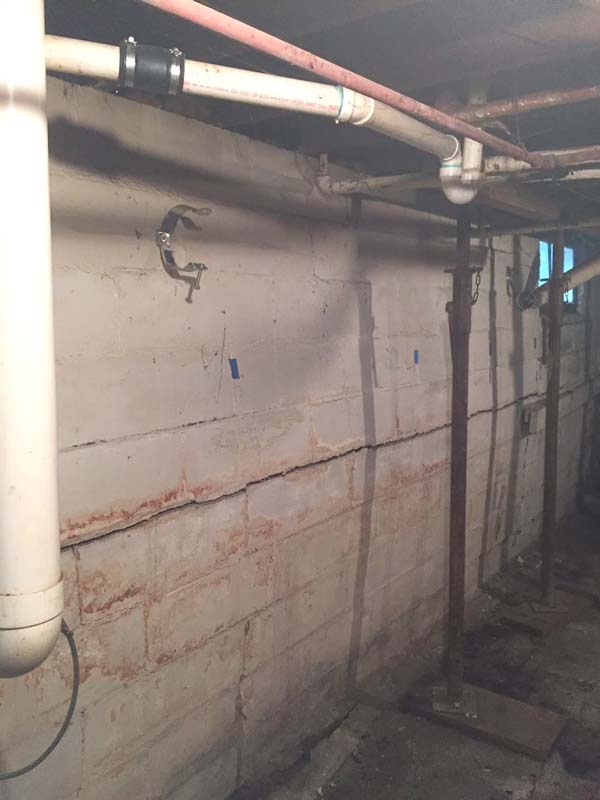
- The Crack is Big – A basement wall crack larger than hairline should be considered structurally significant. Unless you’re sure a crack is non-structural, you should contact a foundation repair contractor and ask them to look at it. You don’t want to mistake a structural crack for a non-structural crack.
- The Crack is Getting Bigger – Structural cracks get bigger over time. They grow, in other words. If unsure, measure the crack periodically to see if it’s growing. If it’s getting bigger, it’s a structural crack, and you need to contact a professional.
- Water Seepage – Water can seep through both a non-structural and a structural crack. Anytime you see water seeping through a crack, a foundation repair professional needs to address the issue. Water leakage leads to dampness, mold, and mildew, which can cause health problems for the home’s residents and lead to significant foundation damage.
- The basement wall is bowing – If your basement wall is bowing inward, this is a sign there’s already significant structural damage. The bowed wall might even be cracked as well. Contact a foundation repair contractor right away and schedule an inspection.
How To Prevent Basement Wall Cracks
Fortunately, there are ways homeowners can minimize the risk of basement wall cracks. These include the following:
- Re-grade your yard, if necessary – It’s essential to ensure the ground around the foundation is graded correctly. If the yard slopes toward the house, groundwater will drain toward the foundation. This could cause hydrostatic pressure to build up and push against basement walls. The yard should be graded appropriately so it slopes away from the foundation, ideally at a slope of 6 inches over 10 feet.
- Clean your gutters regularly – Make sure your gutters aren’t clogged with dead leaves and other debris. You want rainwater channeled into downspouts, not spilling over the side of the house and soaking the ground around the foundation.
- Use downspout extensions – Downspout extensions are inexpensive and easy to install. When rainwater isn’t properly directed away from the foundation, it will seep into the soil around the foundation, leading to a number of issues.
- Consider relocating any water-hungry vegetation – If you have any water-hungry flowers or shrubs planted next to the house, consider relocating them. You don’t want to give yourself a reason to add water to the ground around the foundation.
- Keep trees away from the foundation – Tree roots can invade the ground under the foundation, leading to differential settlement and severe structural damage.
- Install a drain tile system – When it comes to improving drainage around a foundation, nothing beats a drain tile system. It’s the best foundation waterproofing method because it prevents hydrostatic pressure from building up and pushing against foundation walls.
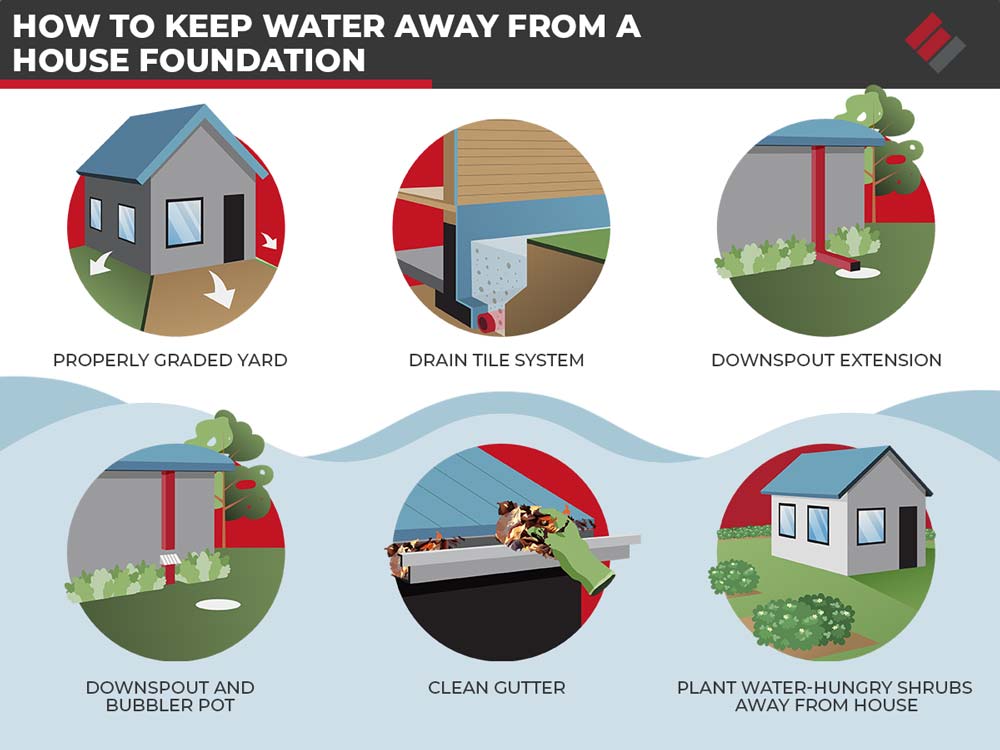
If you’re concerned about how to seal cracks in your basement wall, contact us today to schedule a foundation evaluation. If we find a problem, we’ll give you a repair estimate. We serve areas in four states: Nebraska, Iowa, Kansas, and Missouri. The top cities we serve are Lincoln, Omaha, Grand Island, Kearney, Norfolk, and many more in.

